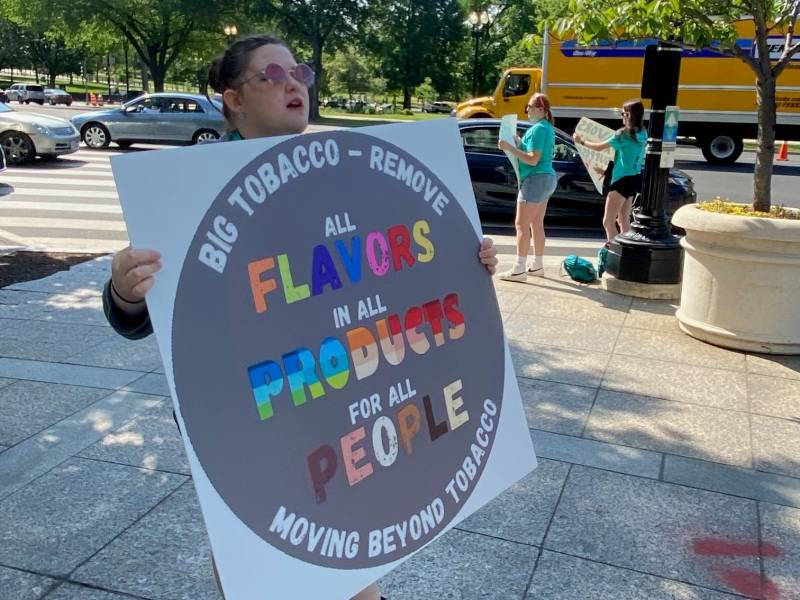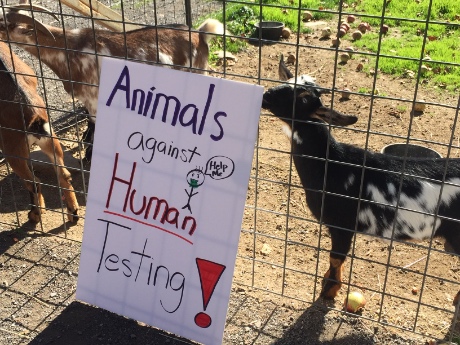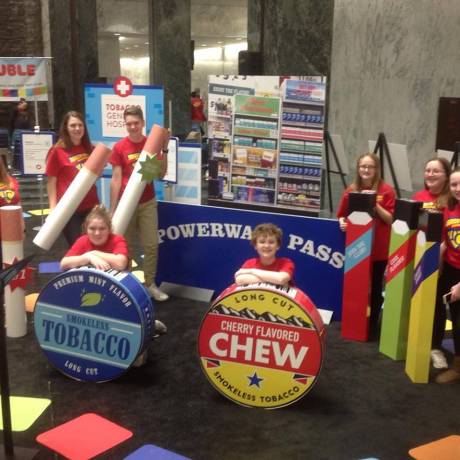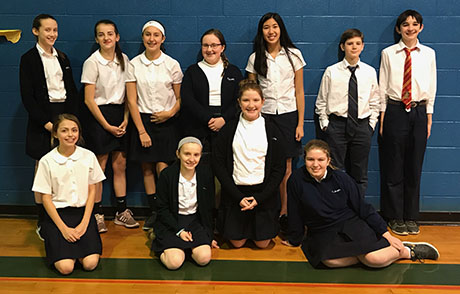Batavia youth protest at tobacco company's shareholders' meeting in D.C.

Press Release:
Nearly 100 youths gather in Washington D.C. to protest Altria Group, Inc.’s shareholder meeting and expose Big Tobacco’s lies and schemes to addict kids.
Last week, Abbigayle Leone and Judith Newton - Reality Check leaders from Batavia High School - joined more than 125 youth and advocates from 15 different states to protest Altria Group, Inc.’s 2023 Annual Meeting of Shareholders. These advocates held a demonstration outside Altria’s Washington, D.C. office, while several youth activists had proxy tickets to directly address Altria’s executives and ask questions during the virtual shareholders’ meeting.
“I’m so proud of my youth for fighting against the manipulative tactics the tobacco industry uses to target them,” said Brittany Bozzer, Youth Coordinator at Tobacco-Free Genesee, Orleans and Wyoming (TF-GOW). “After using their powerful voices in Washington, D.C., the teens plan to continue to address the challenges of tobacco use in their communities back home, as well as mobilize their peers to take action.”
This year marks the eighth consecutive year that Mobilize Against Tobacco Lies (MATL), a collaborative of youth programs and national partners, gathered to expose and fight back against the tobacco giant’s lies. Reality Check youth from across New York State rallied with a coalition of seven tobacco control youth programs and five national partners, including Michigan Making It County, Texas Say What, New Hampshire Dover Youth to Youth, Coalition for a Tobacco-Free Hawaii, Wisconsin FACT, Delaware Kick Butts Generation, Indigenous Peoples Task Force, Corporate Accountability, Counter Tools, Campaign for Tobacco-Free Kids, Center for Black Health and Equity and Truth Initiative.
Altria sells the number one most popular cigarette brand among kids, Marlboro, and has long targeted kids and other vulnerable groups with its products. Altria claims to be “moving beyond smoking,” but the truth is that they rake in billions from cigarettes and other tobacco products, hook kids with new products like e-cigarettes, and fight real efforts to reduce tobacco use.
Despite Altria and the tobacco industry’s efforts, the United States has made great progress to reduce youth smoking. However, the latest government survey shows over 3 million U.S. middle and high school students still use tobacco products, including over 2.5 million who use e-cigarettes.
Reality Check is a teen-led, adult-run program that seeks to prevent and decrease tobacco use among young people throughout New York State. For more information about Reality Check, visit realitycheckofny.org.
Submitted photo courtesy of Gretchen Galley




